|
|
|
|||
|
|
||||
|
|
||||
| The (Jet)X Files | ||||
|
|
HOME | SITE MAP | FORUM | CONTACT |
|
||
|
ABOUT | MOTORS | MODELS | ARCHIVE | HISTORY | STORE | FAQ | LINKS
|
|
|
|
|
|
||||||||||||||||||||||||||||||||||||||||||||
|
The (Jet)X Files 13
(January 2004)
by Roger Simmonds Reprinted from SAM 35 Speaks, January 2004 Feedback As I begin a second year of these articles, I really must thank correspondents for their support and generosity in sharing their Jetex-related stories, articles, plans and photographs. André Bird has provided some more details of his vintage models described in the November (Jet)X Files. About the 1938 Haase rocket plane he writes, "the model flies beautifully on an L2, needing just a bit of extra nose weight. There’s not really a lot to add, as it needed no trimming or modifications, it just went. The model amused a crowd of people at Old Warden when a bad launch caused a stall and [it] arrived vertically, at which point the pod parted company and whizzed about on the ground like a demented smoky weasel till the motor ran out. I glued it back in place and flew it straight away". |
|
||||||||||||||||||||||||||||||||||||||||||||
|
André says of his modification of Bill Gough’s design for L4 power (the plan for which is available on the Jetex.org website), "mine had wings mounted flat upon the booms in line with the thrust line, a centre of gravity at 50% chord and tailplane at around -3° incidence. I modified the original design (André added a tab under the wing) because the Jetex 100 was where you needed to hold the model for consistent launching … I wouldn’t bother trying to put the motor underneath as it is impractical". André has many other interesting and idiosyncratic models that I hope to cover in due course. David Bintciffe has sent me a plan for the Wilmot Mansour Avro 707B [right] (the one with the single dorsal intake) to complement my KeilKraft 707A. The design is similar to the Vampire, another early Wilmot Mansour scale model, and whilst the general shape is accurate and construction competent, it is compromised by an undercambered airfoil and a large amount of (totally redundant) dihedral. The motor arrangement (there is no trough) and wing section can be kept as "period features", but the dihedral will certainly cause ‘dutch rolling’, and should not be replicated. I am still uncertain who designed these somewhat disappointing ‘scale’ models, which are quite inferior to the contemporary Veron designs. They were before Bert Judge and Mike Ingram joined Joe Mansour, and Ian Dowsett disclaims any responsibility. Perhaps it was Harold Figgins, who also, Ian suggests, designed the Flying Wing [right]. Peter Cock tells an interesting story about this model, recently resurrected by Physics of Flight. Peter proof-built a kit soon after his arrival at Wilmot Mansour (WM) in 1952. The wood selection left a lot to be desired, but the biggest QA oversight was the wing spars, as it had not been appreciated that the spars were swept back. Not only were these too short, they had also been slotted for ribs in the wrong places. Peter corrected these faults for subsequent kits, but remains puzzled to this day why there were never any letters of complaint! Be assured that the new Physics of Flight kit has correctly cut wing spars and, in my example, excellent wood. Swedish Saga |
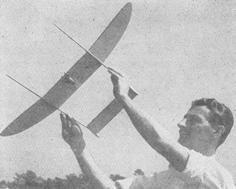
- Model Airplane News, July 1950 (p.31)
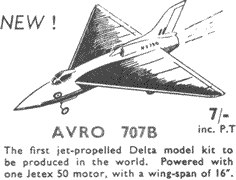
- Model Aircraft, Sep. 1951 (back cover)
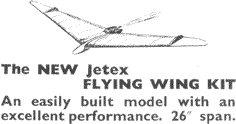
- Model Aviation (UK), Feb. 1950 (p. 2)
|
||||||||||||||||||||||||||||||||||||||||||||
|
In answer to my plea for more information about Jetex activities in Scandinavia, Sten Perrson, editor of Oldtimer, sent me a selection of plans and advertisements that appeared in Swedish magazines of the fifties. Sten writes of those days, "Jetex propulsion was very popular, thanks to Sigurd Isacson [right], the sole importer, who put adverts in every imaginable publication within reach of young people, and sold a wide range of imported Jetex kits as well as his own kits and plans. He also arranged contests and performed spectacular demonstrations … nobody who was present will ever forget when he flew his huge Jetex helicopter in the middle of Stockholm. Sigurd established a number of Scandinavian Jetex records and became an idol to thousands of boys who couldn’t afford "real" engines, but got a taste of power flying by building and flying his Jetex 50 models". Sigurd also distributed a selection of Veron and Skyleada kits, and several models of his own design indigenous to Sweden. These included a profile Hunter, the "Jetex Måsen" [right] for Jetmaster (see SAM Yearbook No 8, where it appears with floats, presumably for ROS or "rise off snow") and the "Jetex Demon" (see ‘Jet Reaction’, SAM Speaks, Dec. 1995). His ‘Modern Jet Fighters’ series included the Sabre, MiG 15, Lansen [below] and SAAB 210/J 35 Draken. 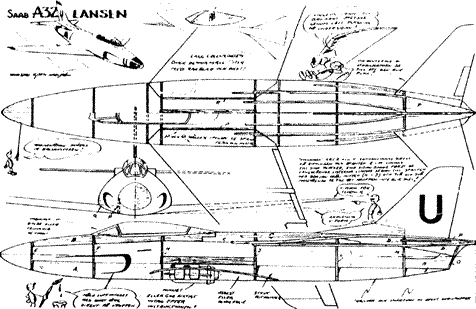
Sten opines these built-up designs were superior to some of the contemporary KeilKraft kits. The plans were decorated with intriguing cartoon figures, the work of co-designer and draughtsman Björn Karlström.The Draken [right] and a profile Hunter have appeared in SAM Speaks, but not, I think, either the MiG 15 or Lansen. The MiG 15 is a curious amalgam of Bill Dean and Albert Hatful features; the construction of the Lansen is similar, though with a curious all-sheet wing. The unique Draken is best of all, ripe for recreation and eminently suitable for Rapier L2 power. If any reader would like a copy of the plan please let me know, as I would love to see this one flying again. The quality of the advertisements is also high, if Sten’s examples are typical. They are distinctly superior to many contemporaneous UK offerings, and I particularly liked the stylish illustrations for the J 35 Draken and the WM Delta Interceptor and Sebel X-15 [below]. 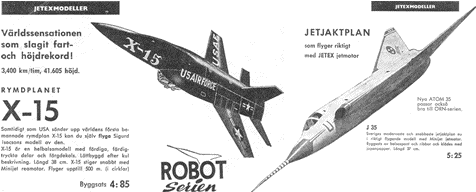
- Isacson catalogue, 1954
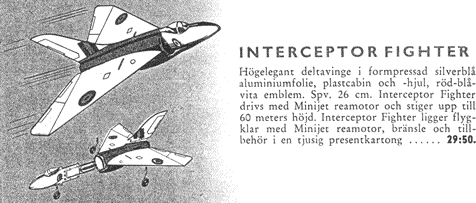
- Isacson catalogue, 1960
I have so far seen only two plans from Sigurd’s many articles in Teknik för alla. These are the aforementioned Wilmot Mansour Vampire (June? 1950), and the Flygande Vinge (Feb. 1951). The former was delightfully annotated with Karlström’s cartoons, though it was otherwise unmodified, which is rather a pity, as the overlong booms could have been shortened without spoiling its (reputedly very good) flying characteristics. Round the Pole |

- Teknik för alla
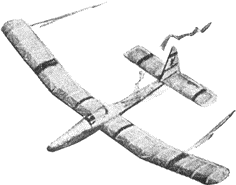
- Isacson catalogue, 1953
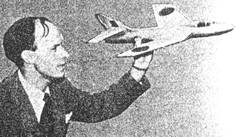
- Isacson catalogue, 1954
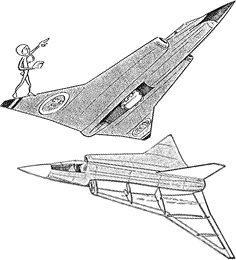
- Teknik för alla, Sep. 1956
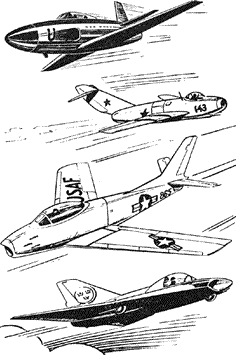
- Isacson catalogue, 1953
|
||||||||||||||||||||||||||||||||||||||||||||
|
Some of the very first demonstrations of Jetex power were with tethered models. C E Bowden wrote in "Model Jet Reaction Engines" (1948), "I saw a model car rush around a circular track at high speed, and a model aeroplane take off and fly around a pole to a good landing … there is a faint smoke trail left … this adds to the realism." This model was Jetex 100 powered, with a pod and boom fuselage (see photo [right]). Colonel Bowden’s little book is still available from TEE Publishing, and contains many fascinating insights into the early post-war jet scene. But there is no mention of Howard Boys or Cockle; according to the good Colonel, free flight pulsejets were the acme of reaction propulsion sophistication. In contrast, Jetex RTP, being both quiet and (comparatively) cheap, was an acceptable and populist recreation in the clubrooms of the late forties and fifties. The robust and exciting models were a good introduction to aeromodelling; this pedagogic potential was early recognised, and some attractive profile and semi-scale designs were published in the numerous US and UK boys’ annuals and ‘activity’ books of the period. Bob Parker attests to the popularity of Jetex speed contests at Enfield and District MAC in the late forties (‘Jetex Matters’, SAM Speaks, Dec. 1988). He said of his anorexic stick models, powered by Jetex 100’s mounted "Doodlebug" style, "the sensation [they created] resulted from the models’ design – or lack of it! The speeds reached were unrecordable – but very, very quick indeed … the wise observed proceedings standing on tables to protect their shins". Vic Westcar also tells a nice story of Jetex RTP fun in a SAM Yearbook. He entered a twin Jetmaster powered Supermarine 508 in his club speed competition, and reckons it reached 110 mph if both motors fired! |
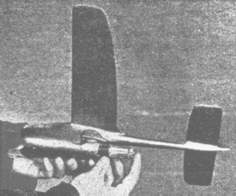
- Model Aircraft, May 1948 (p. 108)
|
||||||||||||||||||||||||||||||||||||||||||||

|
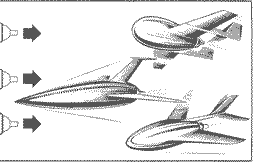
-
Model Aircraft, April 1954 (p. 138)
|
||||||||||||||||||||||||||||||||||||||||||||
|
Tinker’s "Creep" is typical of sophisticated speed models, though, as Bob Parker reminds us, there were cruder (and faster) examples. Underlining the popularity of the activity, RTP jets were a feature of the 1954 Model Engineer Exhibition, with a prize being given for each day‘s speed record. The RTP genre attracted other experts like John Darnell (he of the much maligned Folland Gnat for augmented 50B), whose Marcel Dassault 453 Mystère for Jetex 100 is a nice example of the scale fidelity that could be achieved (see photo [below right]). 
- Aeromodeller, 1954 (p.88)
|
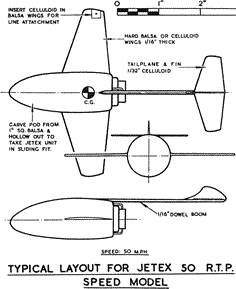
- Aeromodeller, Feb. 1953 (p. 114)

- Aeromodeller, April 1954 (p. 183)
|
||||||||||||||||||||||||||||||||||||||||||||
|
Stan Pearson will be pleased by the lack of stringers. This particular model graced Tinker’s 1954 Aeromodeller article, and I hope the plan, which [as originally published] unfortunately had a dark band across it, is usable. The fuselage and wings are carved from solid, and the motor is a simple push fit into the fuselage with little in the way of protection. Adequate cooling could be a problem, and paint could blister, but balsa, according to Tinker, "will gradually char until a layer of carbon covers the area of contact". A ‘hardwood’ (as opposed to that well-known hardwood, balsa) fuselage was recommended for the larger Jetex 200 and 350 motors. Jetex exhaust (at 350°C) did not, apparently, corrode the unprotected surface of the rear orifice. Tinker warns, "scale nose intakes are virtually useless, because there is insufficient clearance between the unit and the fuselage walls to allow free passage of air to the orifice", but Darnell in this design appears to have got away with it. |

- Aeromodeller, April 1954 (p. 185)
|
||||||||||||||||||||||||||||||||||||||||||||
|
RTP models were my introduction to Jetex aeroplanes (as opposed to hydroplanes), when, encouraged by Rolie Lelliot, I made a couple of semi-scale prototypes for |
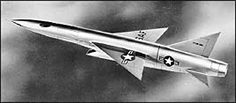 |
||||||||||||||||||||||||||||||||||||||||||||
|
RTP jets thus have an excellent pedigree that goes back to the earliest ‘Jetex’ days. Despite this, they are a ‘Vintage Type’ we have not seen for many years. I suspect I am not alone in thinking this a pity, and I would love to see some of the scale models, which are actually very suitable for Rapier power, flying again. Propelled by the energetic exhaust, they could achieve surprising and exciting velocities, and as the cardboard casings of Rapiers do not get as hot as Jetex motors, there is less risk of an onboard fire, though the jet pipe will need some protection with aluminium foil. Rapiers also have a small cross section and can be enclosed in a slim fuselage (like that of the Mystère) with adequate space for an efficient airflow. However, I am sure these models would most definitely not be welcome at any indoor meeting today. For a start, Rapier exhaust is probably noxious, the speed would be considered a hazard (and not part of the attraction), and just imagine the health and safety assessment of the fire risk! Use indoors, then, is not feasible (except possibly in an EDF conversion, see last month), but if we can have tethered cars at Old Warden, why not tethered jets? If there is sufficient interest it might be possible to set up a pole in the shadow of the hangers at Old Warden. Let me know what you think. Perhaps even a cardboard FD2 will fly quite nicely RTP. |
 The hazards of Jetex RTP
- Aeromodeller, Feb. 1953 (p. 115)
|
||||||||||||||||||||||||||||||||||||||||||||
|
|
|||||||||||||||||||||||||||||||||||||||||||||
|
|
|
||||||||||||||||||||||||||||||||||||||||||||
|
|
|
|
|
|
|
|
Acknowledgements - Article: Roger Simmonds - Illustrations: Sten Perrson (Teknik för alla, Isacson catalogues and Lansen plan) Mike Thomas (Wilmot Mansour RTP demonstrator) MAAC archives via Bill Henderson (Wilmot Mansour advertisements, Mystère plan, RTP illustrations) Bill Henderson (Gough's Twin Boom 100) |
|
|
|
|
ABOUT | MOTORS | MODELS | ARCHIVE | HISTORY | STORE | FAQ | LINKS |
|
|
Terms of Use
|
Queries? Corrections? Additions?
Please
contact us.
|
|